Related Research Articles
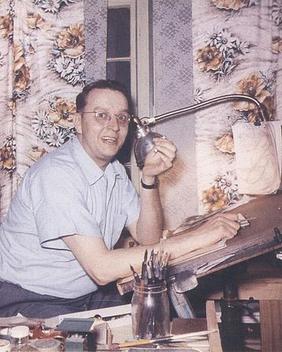
Jack Ralph Cole was an American cartoonist best known for birthing the comedic superhero Plastic Man, and his cartoons for Playboy magazine.

Addison Morton Walker was an American comic strip writer, best known for creating the newspaper comic strips Beetle Bailey in 1950 and Hi and Lois in 1954. He signed Addison to some of his strips.

William Morgan DeBeck, better known as Billy DeBeck, was an American cartoonist. He is most famous as the creator of the comic strip Barney Google, later retitled Barney Google and Snuffy Smith. The strip was especially popular in the 1920s and 1930s, and featured a number of well-known characters, including the title character, Bunky, Snuffy Smith, and Spark Plug the race horse. Spark Plug was a merchandising phenomenon, and has been called the Snoopy of the 1920s.
Don Markstein's Toonopedia is an online encyclopedia of print cartoons, comic strips and animation, initiated February 13, 2001. Donald D. Markstein, the sole writer and editor of Toonopedia, termed it "the world's first hypertext encyclopedia of toons" and stated, "The basic idea is to cover the entire spectrum of American cartoonery."
United Feature Syndicate, Inc. (UFS) is a large American editorial column and comic strip newspaper syndication service based in the United States and established in 1919. Originally part of E. W. Scripps Company, it was part of United Media from 1978 to 2011, and is now a division of Andrews McMeel Syndication. United Features has syndicated many notable comic strips, including Peanuts, Garfield, Li'l Abner, Dilbert, Nancy, and Marmaduke.

Henry Boltinoff was an American cartoonist who worked for both comic strips and comic books. He was a prolific cartoonist and drew many of the humor and filler strips that appeared in National Periodical comics from the 1940s through the 1960s.
Robert Dana Gustafson was an American cartoonist whose work includes eight years on Tillie the Toiler and a 27-year run on the Beetle Bailey comic books.

Milt Gross was an American cartoonist and animator. His work is noted for its exaggerated cartoon style and Yiddish-inflected English dialogue. He originated the non-sequitur "Banana Oil!" as a phrase deflating pomposity and posing. His character Count Screwloose's admonition, "Iggy, keep an eye on me!", became a national catchphrase. The National Cartoonists Society fund to aid indigent cartoonists and their families, for many years was known as the Milt Gross Fund. In 2005, it was absorbed by the Society's Foundation, which continues the charitable work of the Fund.
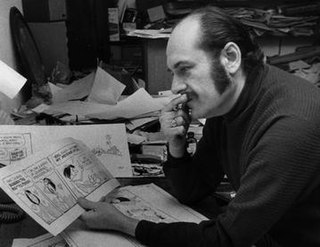
Howard "Howie" Post was an American animator, cartoonist, and comic strip and comic book writer-artist.

Nemo, the Classic Comics Library was a magazine devoted to the history and creators of vintage comic strips. Created by comics historian Rick Marschall, it was published between 1983 and 1990 by Fantagraphics.

Neil the Horse is a comic book character created by Canadian cartoonist Katherine Collins in 1975. Neil is a happy, singing and dancing horse who likes bananas and milkshakes. Neil's adventures were syndicated in Canadian newspapers, published in a comic book series, and adapted for a radio musical.
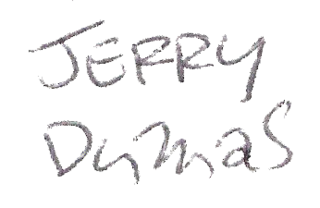
Gerald John Dumas was an American cartoonist, best known for his Sam and Silo comic strip. Dumas was also a writer, illustrator, and essayist, and a columnist for the Greenwich Time.

The Three Mouseketeers is the name of two separate talking animal comic series published by DC Comics.
Sam and Silo is an American comic strip created by Mort Walker and Jerry Dumas, which began on April 18, 1977. The series is a "continuation" or a spin-off of Sam's Strip (1961-1963), as it uses the same characters. Dumas was solely responsible for the strip from 1995 and drew it until his death in 2016.
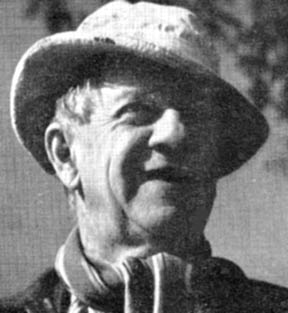
Clare Victor Dwiggins was an American cartoonist who signed his work Dwig. Dwiggins created a number of comic strips and single-panel cartoons for various American newspapers and newspaper syndicates from 1897 until 1945, including his best-known strip, the long-running School Days.
Winthrop is an American syndicated newspaper comic strip that was published between 1966 and 1994, created and produced by cartoonist Dick Cavalli. The series—which derived its comedy from a group of children's nonchalantly world-wise observations—evolved from Cavalli's 1956-1966 strip, Morty Meekle, which featured adult characters.
Richard A. Cavalli was an American commercial illustrator and cartoonist best known for the comic strips Morty Meekle and its successor, Winthrop, which consecutively were syndicated to newspapers from 1956 to 1994.

Silly Symphonies: The Complete Disney Classics is a book series which reprints Walt Disney's Silly Symphony Sunday comic strip, drawn by several different Disney artists from 1932 to 1945. The strip was published by King Features Syndicate. The strip often introduced new Disney characters to the public, including its first comic character, Bucky Bug. The series was published by The Library of American Comics from 2016 to 2019.
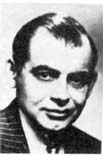
Sylvan S. Byck (July 17, 1904 – July 8, 1982 was an American editor and cartoonist, who was the comic strip editor for King Features Syndicate for over 30 years, in which position he evaluated "up to 2000 comics submissions a year."
William Raphael Louis Dwyer, Jr., known as Bil Dwyer, was an American cartoonist and humorist. He was known for several newspaper comic strips in the 1930s and 1950s, including Dumb Dora and Sandy Hill, as well as a series of humorous books of Southern slang published in the 1970s.
References
- ↑ Allan Holtz (2012). American Newspaper Comics: An Encyclopedic Reference Guide. Ann Arbor: The University of Michigan Press. p. 341. ISBN 9780472117567.
- 1 2 3 Mort Walker; Jerry Dumas (2009). Sam's Strip: The Comic About Comics. Fantagraphics Books. ISBN 978-1560979722.
- 1 2 3 4 Chad Nevett (2009-02-22). "Sam's Strip: The Comic about Comics". Comic Book Resources. Retrieved 2016-02-22.
- ↑ Don Markstein. "Sam's Strip". Don Markstein's Toonopedia. Archived from the original on 2017-01-05.
- ↑ "Sam's Strip". TV Tropes. Retrieved 2016-02-22.
- 1 2 3 Mort Walker (January 2008). Amazon. Fantagraphics Books. ISBN 978-1560979722.
- 1 2 Andrew Williams (2009-05-10). "Sam's Strip: The Comic About Comics review". Den of Geek. Retrieved 2016-02-22.